ALTOS VOOS
IV ROVER AÇORIANO
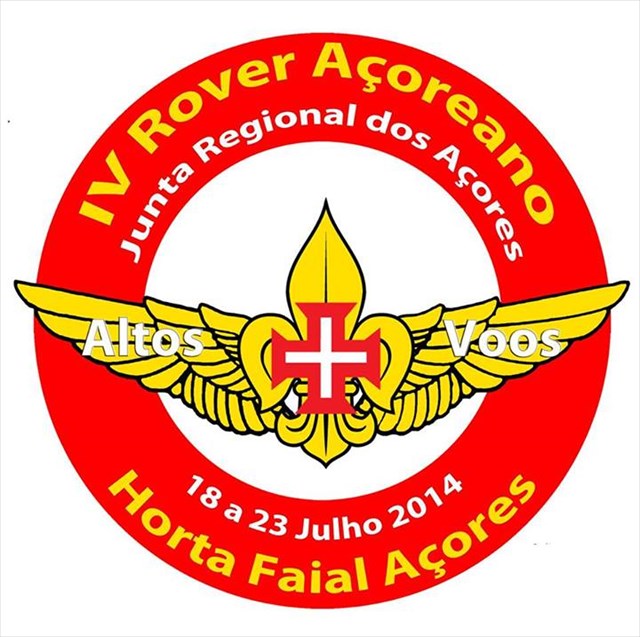

PORTUGUÊS

O IV Rover Açoriano, com o tema “ALTOS VOOS” e sob o lema: “atreve-te a servir“, realiza-se em julho de 2014, na Quinta de S. Lourenço, na ilha do Faial. Esta atividade do Escutismo, destina-se a caminheiros e companheiros (jovens escuteiros terrestres e marítimos, com idades compreendidas entre os 18 e os 22 anos). Em campo circula o “jornal”: O Clipper.
O IV - Rover Açoriano tem por finalidades: Proporcionar a todos os Caminheiros/Companheiros participantes a vivência do ideal escutista estruturado na metodologia educativa da IV secção, contribuindo para o crescimento e enriquecimento da mesma; Fomentar o crescimento de novos valores ao Caminheiro, tornando-o artesão de um Mundo Novo, vivendo a imagem e a dimensão do Homem Novo; Viver as três dimensões definidas por Baden-Powell para o Caminheirismo: Ar Livre, Serviço e Fraternidade; Despertar para uma reflexão e ponderação individual e coletiva, face às constantes mutações da Humanidade adjacentes da globalização; Potencializar e reconhecer o sentido de desprendimento, responsabilidade, inquietação, missão e compromisso dos Caminheiros/Companheiros, traduzindo-se numa ação de tolerância, cooperação, partilha, verdade e justiça, tendo por base a Doutrina Social da Igreja; Estimular os diversos Clãs participantes neste Rover, a conceberem uma Caminhada, orientada e alicerçada na Carta dos Deveres do Homem; Integrar o escutismo na sociedade conjuntamente com outras Instituições e Associações, levando a um maior intercâmbio na troca de conhecimentos ao serviço do bem comum e contribuir para o reforço da imagem do Corpo Nacional de Escutas nos Açores, afirmando-se como um movimento de formação integral da juventude, a qual se pauta pela valorização da insularidade e dignificação da Autonomia Regional, contribuindo assim para a prática da cidadania.
Algumas atividades:

- RAID dos Monumentos Históricos e Arquitetónicos da Ilha do Faial;
- História da aviação nos Açores e o papel da cidade da Horta;
- Trilho dos 10 Vulcões; - Visita ao museu do Vulcão dos Capelinhos;
- Subida ao Vulcão para ver o pôr-do-sol (Desenho Humano do “IV ROVER”)
- Atividades Náuticas: “Sente” Whale Watching; “Conhece” Atelier de baleação (museu do Peter); “Partilha” Torneio de polo aquático; “Vive” Passeio em bote baleeiro – Voluntariado
Anteriores edições do Rover Açoriano:
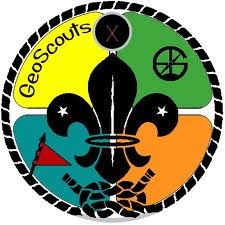
- I Rover Açoriano, realizou-se, em 2003, na ilha Terceira,
- II Rover Açoriano aconteceu nas ilhas do grupo Ocidental (Flores e Corvo) em 2006,
- III Rover Açoriano, teve lugar em S. Jorge, em 2010
O TEMA – ALTOS VOOS
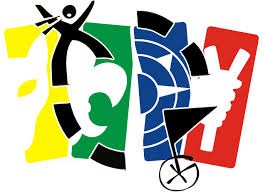
A localização dos Açores na zona central do Atlântico Norte, fez com que as ilhas açorianas constituíssem durante séculos uma autêntica encruzilhada nas rotas transatlânticas. Na fase da navegação à vela, devido ao regime de ventos e correntes que obrigava à "volta do largo", as embarcações provenientes do Atlântico Sul (da Índia, Extremo Oriente e outras partes da Ásia, de África, do Brasil e outras partes da América do Sul) e das Caraíbas (das chamadas "Índias de Castela") faziam uma larga rotação no sentido dos ponteiros do relógio que as trazia até às proximidades do Grupo Ocidental, cruzando depois o arquipélago em direção à Europa. É esse o percurso que ainda hoje faz a navegação de recreio, utilizando como ponto de apoio o porto da Horta, ilha do Faial.
Com o aparecimento da navegação a vapor, os portos dos Açores, particularmente os de Ponta Delgada e Horta, os únicos com molhes de proteção e cais acostáveis de dimensão apreciável, assumiram importante papel no fornecimento de carvão. Com o advento da aviação, os Açores cedo ganharam importância como ponto de apoio. As primeiras travessias aéreas do Atlântico escalaram os Açores, e a Horta, com a sua baía abrigada e ligações telegráficas intercontinentais via cabo submarino, foi uma importante escala nas ligações entre a Europa e a América por hidroavião (os clippers).
No contexto da Primeira Guerra Mundial a cidade da Horta, na ilha do Faial, sofreu bombardeamento por parte do Império Alemão (dezembro de 1916). Ainda nesse ano (1919), um hidroavião que viajava entre a Inglaterra e os Estados Unidos da América, fez escala na baía da Horta. A partir de então, as travessias oceânicas passaram a suceder-se com frequência cada vez maior, utilizando as ilhas dos Açores como escala, nomeadamente com amaragens na baía da Horta.
Entre 1930 e 1933, a companhia de aviação estadunidense Pan American World Airways (PanAm) realizou testes na baía da Horta para a implantação de uma base de apoio para a operação de uma rota comercial transatlântica. Nesse contexto, Charles Lindbergh acompanhado por sua esposa, Anne Morrow, a serviço da PanAm, aí amarou a 21 de novembro de 1933, com um monoplano Lockheed 8 Sirius. Em 1933, chegou ao arquipélago a esquadrilha do italiano Italo Balbo, integrada por 24 hidroaviões, nove dos quais amerissaram no porto da Horta, seguindo os restantes para Ponta Delgada, onde um deles se perdeu, vindo a falecer o respetivo piloto.
A 16 de Agosto de 1937 a PAN AM é autorizada a efetuar o voo de ensaio, New York – Bermudas – Faial (Açores) – Lisboa – Marselha - Southampton e regresso a Port Washinton utilizando um hidroavião modelo Sikorsky S-42 – 16736 de nome Pan American Clipper III. A frota de hidroaviões da PAN AM até à entrada operacional dos Boeing 314 era das marcas Sikorsky e Martin e dispunham já de equipamento de rádio, para comunicarem entre si e as bases operacionais. Quando da exploração da linha FAM 14 do Pacífico atribuída à PAN AM iniciada em 22 de Fevereiro de 1935, e operada com hidroaviões Sikorsky, a companhia verificou as más condições de receção e por vezes zonas de silêncio devido à deficiente cobertura radioelétrica.
A solução encontrada foi a compra de uma escuna de quatro mastros em 1937, que devidamente equipada iria funcionar como Estação Móvel de Comunicações para nas longas distâncias sobre o mar, auxiliar as comunicações como estação retransmissora entre os hidros e as estações fixas. Foi a partir de um CLIPPER, nome dado a um veleiro comercial rápido, que a companhia se socorreu para na rota dos hidroaviões melhorar as comunicações rádio, funcionando o barco como estação relé. (Mobile Airway station). Este veleiro só atuou no Oceano Pacífico. Por decisão da PAN AM todos os hidroaviões passaram assim a ser batizados tendo como segundo nome a palavra Clipper. Com a conclusão das negociações com Portugal a PAN AM inicia a construção de infraestruturas, e ao abrigo desse acordo constrói no Porto da Horta instalações aeroportuárias, de telecomunicações terra/avião equipa.

A CACHE:
A cache tem um formato não convencional.
É necessário levar material de escrita.
Deixe, por favor, tudo como encontrou e não divulgue fotos do container.

HORÁRIO:
2ª a 6º feira
Das 9H00 às 17H30
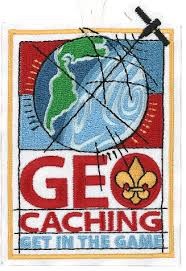
HIGHER FLIGHTS
IV ROVER AÇORIANO
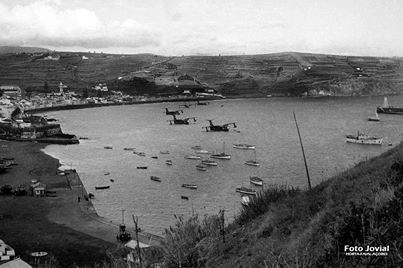
ENGLISH

The Azorean Rover IV , with the theme " HIGH FLIGHT " and under the slogan : " dare you to serve," held in July 2014 , at the Quinta de S. Lourenço , on the island of Faial . This activity of the Azorean Scouting , intended to rovers and companions (young land and sea scouts, aged 18 to 22 years) . Field circulates the " newspaper" : The Clipper .
The IV - Azorean Rover aims at: Provide all rover/companion participants living the structured Scout ideal and educational methodology in the Section IV , contributing to the growth and enrichment of the same ; Fostering the growth of new values to the rovers , making them the artisans of a New World , living image of the New Man ; Living the three dimensions defined by Baden - Powell to rovers : Outdoors , Service and Brotherhood ; Awakening to a reflection and individual and collective consideration , given the constant changes of adjacent Humanity of globalization ; Recognize and enhance the sense of selflessness , responsibility , caring, mission and commitment of rovers/companions , translating into a share of tolerance , cooperation , sharing , truth and justice , based on the Social Doctrine of the Church ; Encourage several participants Clans this Rover , to construct a walk , guided and grounded in the Charter of Duties of Man ; Include Scouting in society jointly with other institutions and associations , leading to greater exchange in the exchange of knowledge for common good and to contribute to strengthening the image of the National Corps of Scouts in the Azores , asserting itself as a movement of integral formation youth , which is guided by the appreciation of insularity and dignity of Regional Autonomy , thus contributing to the practice of citizenship .
Some activities:

- RAID of historical and architectural monuments of Faial Island;
- History of Aviation in the Azores and the role of Horta;
- Rail of 10 Volcanoes; - Visit to the Capelinhos museum;
- Ascent to the Volcano to watch the sunset Sunsets (Human Drawing "ROVER IV")
Nautical Activities - "Sit" Whale Watching; "Know" Atelier Whaling (museum of Peter); "Sharing" Tournament of water polo; "Live" Walking on whaling boat - Volunteering

Previous editions of the Azorean Rover:
- I Azorean Rover was held in 2003 on the island of Terceira,
- II Rover II Azorean, happened in the western group (Flores and Corvo) Islands in 2006,
- III Azorean Rover, held in St. George in 2010
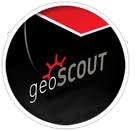
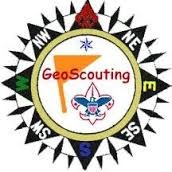
THEME - HIGH FLIGHTS
The location of the Azores in the central North Atlantic , caused the Azorean islands to constitute a genuine crossroads on transatlantic routes . At the stage of sailing due to the winds and currents forced the regime " around the square ," vessels from the South Atlantic ( India , East Asia and other parts of Asia , Africa , Brazil and other parts of South America) and the Caribbean ( the so-called " Indies of Castile " ) made a large rotation in the clockwise direction that brought to the vicinity of the Western Group , after crossing the archipelago towards Europe . This is the route that still makes boating, using as support the port of Horta , Faial .
With the advent of steam navigation , the ports of the Azores , particularly of Ponta Delgada and Horta , the ones with protective jetties and berths sizeable enough assumed an important role in the supply of coal. With the advent of aviation, the Azores early gained importance as a fulcrum . The first aerial crossing of the Atlantic climbed the Azores , Horta and with its sheltered bay and transcontinental telegraph connections via submarine cable , was an important stop over on routes between Europe and America by seaplane ( clippers ) .
In the context of the First World War the city of Horta on Faial , suffered a bombardment by the German Empire ( December 1916 ) . Later that year (1919 ) , a seaplane traveling between Britain and the United States of America , made a stop in the Bay of Horta . Since then , the oceanic crossings now occur with increasing frequency , using the Azores as scale , particularly with amaragens the Bay of Horta .
Between 1930 and 1933 , the U.S. aviation company of Pan American World Airways ( Pan Am ) conducted tests in the Bay of Horta for deploying a base of support for the operation of a transatlantic trade route . In this context , Charles Lindbergh accompanied by his wife , Anne Morrow , the service of PanAm , there landed on sea the November 21, 1933 , with a monoplane Lockheed 8 Sirius . In 1933 , the squadron arrived at the archipelago of the Italian Italo Balbo , comprising 24 seaplanes , nine of whom landed on sea the port of Horta , following the other to Ponta Delgada , where one of them got lost and died the respective pilot.
The August 16, 1937 PAN AM is authorized to make the test flight , New York - Bermuda - Faial ( Azores ) - Lisbon - Marseille - Southampton and return to Port Washinton using a seaplane model Sikorsky S - 42-16736 name Pan American Clipper III . The fleet of seaplanes PAN AM at the operational input of the Boeing 314 was the brands Sikorsky and Martin and has had radio equipment to communicate with each other and the operational bases . When the operation of the FAM 14 Pacific attributed to PAN AM started in February 22, 1935 , and operated with Sikorsky seaplanes , line the company found the bad conditions of reception and sometimes quiet zones due to poor radio-electronic coverage.
The solution was to purchase a four-masted schooner in 1937 , which would work properly equipped as Communications Mobile Station to the long distances over the sea , assist as communications relay station between hydro and fixed stations . It was from a CLIPPER , name given to a quick commercial sailboat, the company had resorted to the route of seaplanes improve radio communications , running the boat as relay station . ( Airway Mobile station) . This boat only acted in the Pacific Ocean. By PAN AM decision all seaplanes began to be baptized as well as second name having the word Clipper . With the completion of negotiations with Portugal PAN AM starts building infrastructure , and under that agreement builds in Port of Horta airport facilities , telecommunications land / aircraft team .

THE CACHE
The cache has an unconventional shape.
You must take writing material.
Please do not divulge how you met and photos of container.
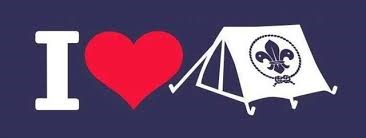
OPEN TIME:
monday to friday
from 9H00 to 17H30
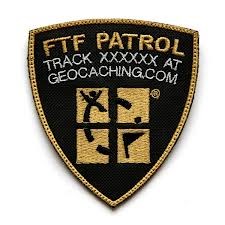
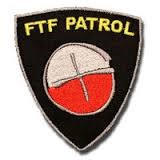
a